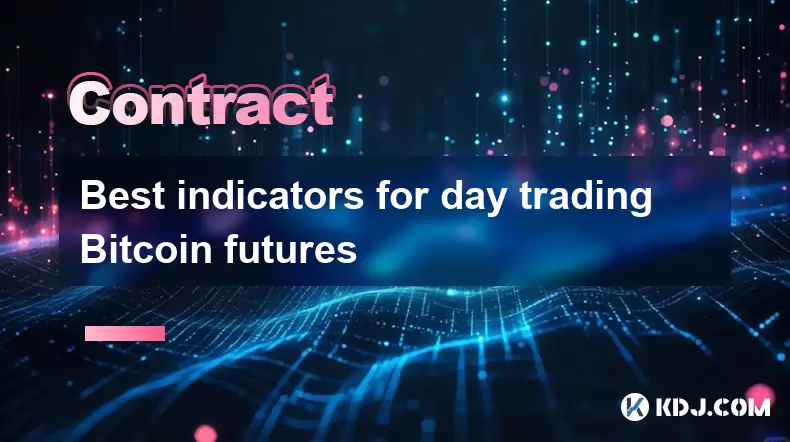-
 Bitcoin
Bitcoin $117,462.8204
-2.03% -
 Ethereum
Ethereum $3,061.1595
1.10% -
 XRP
XRP $2.9139
-2.19% -
 Tether USDt
Tether USDt $1.0002
0.02% -
 BNB
BNB $685.1357
-1.24% -
 Solana
Solana $161.3803
-2.11% -
 USDC
USDC $1.0002
0.04% -
 Dogecoin
Dogecoin $0.1948
-2.92% -
 TRON
TRON $0.2987
-0.89% -
 Cardano
Cardano $0.7330
-1.27% -
 Hyperliquid
Hyperliquid $47.7888
0.13% -
 Stellar
Stellar $0.4514
-2.93% -
 Sui
Sui $4.0169
2.74% -
 Chainlink
Chainlink $15.7088
-2.57% -
 Hedera
Hedera $0.2356
-3.33% -
 Bitcoin Cash
Bitcoin Cash $488.6656
-3.61% -
 Avalanche
Avalanche $21.2955
-1.47% -
 UNUS SED LEO
UNUS SED LEO $9.0415
0.42% -
 Shiba Inu
Shiba Inu $0.0...01332
-0.82% -
 Toncoin
Toncoin $3.0124
-0.62% -
 Litecoin
Litecoin $94.2175
-2.07% -
 Polkadot
Polkadot $4.0011
-0.61% -
 Monero
Monero $333.5714
-3.46% -
 Uniswap
Uniswap $9.1114
-1.56% -
 Dai
Dai $1.0000
0.02% -
 Ethena USDe
Ethena USDe $1.0005
0.00% -
 Bitget Token
Bitget Token $4.4951
1.87% -
 Pepe
Pepe $0.0...01242
0.47% -
 Aave
Aave $321.9943
0.51% -
 Bittensor
Bittensor $434.1984
5.13%
Best indicators for day trading Bitcoin futures
Bitcoin futures traders rely on technical indicators like moving averages, RSI, and Bollinger Bands to navigate volatility and spot high-probability trade setups.
Jul 13, 2025 at 12:00 pm

Understanding Bitcoin Futures and Their Unique Characteristics
Bitcoin futures are derivative contracts that allow traders to speculate on the future price of Bitcoin without owning the underlying asset. Unlike spot trading, futures trading involves leverage, expiration dates, and contract sizes. For day traders, this means the need for accurate and timely signals is even more critical. Given the high volatility and 24/7 nature of the crypto market, selecting the right indicators becomes essential for consistent profitability.
Importance of Technical Indicators in Bitcoin Futures Trading
Technical indicators are tools used to analyze historical price data and volume to forecast future price movements. In the context of Bitcoin futures, these indicators help traders make informed decisions in a market that often reacts swiftly to news, macroeconomic factors, and whale activity. The best indicators for day trading Bitcoin futures are those that provide clear signals, reduce noise, and adapt to changing market conditions.
Moving Averages: Smoothing Out Price Action
One of the most widely used tools among professional traders is the moving average (MA). It helps smooth out price data to identify trends more clearly. The two most common types are the Simple Moving Average (SMA) and the Exponential Moving Average (EMA). In day trading Bitcoin futures, short-term moving averages such as the 9-period and 21-period EMAs are particularly effective.
- Crossovers between these EMAs can signal potential trend changes.
- When the 9 EMA crosses above the 21 EMA, it may indicate a bullish trend.
- Conversely, a bearish crossover occurs when the 9 EMA crosses below the 21 EMA.
- Traders often use the 50 EMA as a dynamic support or resistance level during strong trends.
It’s important to combine moving averages with other tools to avoid false signals, especially in sideways or choppy markets.
Relative Strength Index (RSI): Gauging Overbought and Oversold Conditions
The Relative Strength Index (RSI) is a momentum oscillator that measures the speed and change of price movements. It ranges from 0 to 100 and is commonly used to identify overbought (>70) and oversold (<30) conditions. For day traders of Bitcoin futures, RSI can help spot potential reversals or continuations.
- Divergences between RSI and price can signal weakening trends.
- Traders often use a 14-period RSI on 1-hour or 15-minute charts for intraday trading.
- When RSI stays above 50, it indicates a bullish bias; below 50 suggests bearish momentum.
- Avoid trading solely based on overbought or oversold levels, as Bitcoin can remain in extended trends.
Using RSI in combination with price action and volume can increase the accuracy of trade signals.
Bollinger Bands: Measuring Volatility and Price Extremes
Bollinger Bands consist of a middle SMA (usually 20-period) and two standard deviation bands above and below it. They are especially useful in Bitcoin futures trading due to the asset’s high volatility. These bands expand and contract based on market conditions.
- Price touching the upper band may suggest overbought conditions.
- Price touching the lower band may indicate oversold levels.
- Squeezes occur when the bands contract, signaling potential breakouts.
- Traders often look for volatility expansions after a squeeze to enter trades.
Bollinger Bands should not be used in isolation; combining them with RSI or volume can enhance their effectiveness.
Volume Profile: Understanding Market Structure and Liquidity
Volume Profile is a powerful tool that displays traded volume at different price levels. For Bitcoin futures traders, this indicator is crucial for identifying key support and resistance levels, as well as areas of high liquidity.
- Point of Control (POC) shows where the most volume was traded, indicating strong support/resistance.
- Value Areas represent the range where the majority of volume occurred during a selected period.
- High Volume Nodes (HVNs) are price levels with significant trading activity and often act as magnets for price.
- Day traders use Volume Profile to find fair price zones and anticipate reversals or breakouts.
Using Volume Profile in conjunction with order flow analysis can provide a deeper understanding of market sentiment.
MACD: Identifying Momentum and Trend Changes
The Moving Average Convergence Divergence (MACD) is a versatile indicator that combines trend and momentum analysis. It consists of two lines (MACD line and signal line) and a histogram that represents the difference between them.
- A bullish signal occurs when the MACD line crosses above the signal line.
- A bearish signal is generated when the MACD line crosses below the signal line.
- The histogram helps visualize the strength of momentum.
- Divergences between MACD and price can also indicate potential trend reversals.
While MACD is effective in trending markets, it can produce false signals in sideways or choppy conditions. Therefore, it should be used with other confirming tools.
Frequently Asked Questions
Q: Can I rely solely on one indicator for day trading Bitcoin futures?
A: While some traders specialize in mastering a single indicator, it’s generally more effective to combine multiple tools to confirm signals and filter out false ones. For example, using RSI with Bollinger Bands or MACD with moving averages can improve trade accuracy.
Q: Should I use the same indicator settings as professional traders?
A: Indicator settings depend on your trading style, time frame, and market conditions. While many professionals use default settings like 14-period RSI or 20-period Bollinger Bands, it’s essential to backtest and adjust them based on your strategy and the volatility of Bitcoin futures.
Q: How do I handle false signals from indicators in Bitcoin futures trading?
A: False signals are common in highly volatile markets like Bitcoin futures. To reduce their impact, incorporate price action analysis, volume confirmation, and risk management rules into your trading plan. Using multiple indicators together can also help filter out unreliable signals.
Q: Are there any specific chart time frames that work best with these indicators?
A: For day trading, common time frames include 1-minute, 5-minute, 15-minute, and 1-hour charts. Shorter time frames provide more signals but can be noisy, while longer time frames offer clearer trends. Many traders use a multi-time frame approach, analyzing higher time frames for trend direction and lower ones for entry and exit points.
Disclaimer:info@kdj.com
The information provided is not trading advice. kdj.com does not assume any responsibility for any investments made based on the information provided in this article. Cryptocurrencies are highly volatile and it is highly recommended that you invest with caution after thorough research!
If you believe that the content used on this website infringes your copyright, please contact us immediately (info@kdj.com) and we will delete it promptly.
- Solana Memecoins Hit the Big Time: PUMP and Sonic Get Coinbase Listing Boost!
- 2025-07-16 06:50:12
- Core Foundation's Rev+: Fueling Ecosystem Growth Through Revenue Sharing
- 2025-07-16 06:30:17
- Ripple, California, and Collaboration: A New Era for Crypto?
- 2025-07-16 06:30:17
- Uniswap, Mary-Catherine Lader, and the DeFi Evolution: What's Next?
- 2025-07-16 07:10:12
- Roman Storm, DPRK Hackers, and Prosecutors: A Tangled Web
- 2025-07-16 06:50:12
- Penguin Pump: Riding the $PENGU Wave in the Wild World of Crypto
- 2025-07-16 07:15:12
Related knowledge

What is a stablecoin-margined contract vs a coin-margined contract?
Jul 15,2025 at 06:36pm
Understanding the Difference Between Stablecoin-Margined Contracts and Coin-Margined ContractsIn the world of cryptocurrency derivatives, margin plays...

How to backtest a Bitcoin futures trading strategy?
Jul 15,2025 at 11:35am
Understanding Bitcoin Futures TradingBitcoin futures trading involves contracts to buy or sell Bitcoin at a predetermined price and date in the future...

Psychology of trading Bitcoin contracts
Jul 13,2025 at 02:50am
Understanding the Emotional Rollercoaster of Bitcoin Futures TradingBitcoin contract trading, especially in the form of futures, introduces a high lev...

Can the Lightning Network be used for smart contracts?
Jul 14,2025 at 11:28pm
Understanding the Lightning Network's Core FunctionalityThe Lightning Network is a second-layer solution built on top of blockchain protocols like Bit...

How does macroeconomic news affect Bitcoin futures prices?
Jul 15,2025 at 04:56pm
Understanding the Relationship Between Macroeconomic News and Bitcoin FuturesBitcoin futures are derivative contracts that allow traders to speculate ...

Best time of day to trade Bitcoin contracts?
Jul 13,2025 at 05:29am
Understanding Bitcoin Contracts and Their VolatilityBitcoin contracts, particularly futures contracts, are derivative instruments that allow traders t...

What is a stablecoin-margined contract vs a coin-margined contract?
Jul 15,2025 at 06:36pm
Understanding the Difference Between Stablecoin-Margined Contracts and Coin-Margined ContractsIn the world of cryptocurrency derivatives, margin plays...

How to backtest a Bitcoin futures trading strategy?
Jul 15,2025 at 11:35am
Understanding Bitcoin Futures TradingBitcoin futures trading involves contracts to buy or sell Bitcoin at a predetermined price and date in the future...

Psychology of trading Bitcoin contracts
Jul 13,2025 at 02:50am
Understanding the Emotional Rollercoaster of Bitcoin Futures TradingBitcoin contract trading, especially in the form of futures, introduces a high lev...

Can the Lightning Network be used for smart contracts?
Jul 14,2025 at 11:28pm
Understanding the Lightning Network's Core FunctionalityThe Lightning Network is a second-layer solution built on top of blockchain protocols like Bit...

How does macroeconomic news affect Bitcoin futures prices?
Jul 15,2025 at 04:56pm
Understanding the Relationship Between Macroeconomic News and Bitcoin FuturesBitcoin futures are derivative contracts that allow traders to speculate ...

Best time of day to trade Bitcoin contracts?
Jul 13,2025 at 05:29am
Understanding Bitcoin Contracts and Their VolatilityBitcoin contracts, particularly futures contracts, are derivative instruments that allow traders t...
See all articles

























































































